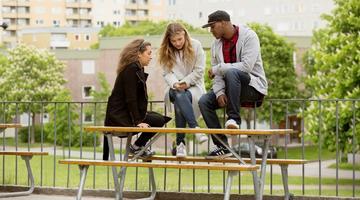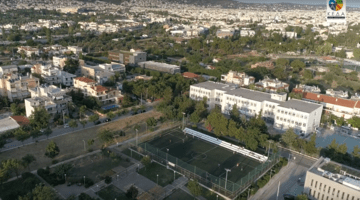From invisible to invaluable: making biodiversity personal across Europe
Support for protecting biodiversity runs high among Europeans. But for many living in towns and cities, nature has slowly slipped out of everyday life and consideration. The disconnect is not just emotional — it quietly shapes what people notice, value, and demand. Biodiversity has become something abstract, distant from daily life, and often invisible in our surroundings.
A new approach, tested in four European communities, is showing promising results, with participants reporting increased awareness, changes in behaviour, and wider community engagement, according to a new report on ‘Exploring the Study Circle approach in fostering change in biodiversity values among adults’.
The format — Study Circles, a method originally developed through adult education in Sweden — brought small groups of adults together once a month to explore what biodiversity means where they live, and why it matters. Over the course of a year, community-based experiments in Slovenia, Ireland, Sweden, and Greece aimed to reconnect people with nature — not through leaflets or campaigns, but by inviting them to explore, observe, talk, and learn together.
In Sweden, participants explored the Järvafältet nature reserve, located near some of Stockholm’s more socially vulnerable communities. In Ireland, they held photography workshops and nature walks, culminating in a public exhibition. In Greece, the group began labelling native plants in an urban forest to help others notice what is growing around them. In Slovenia, children and adults worked together as part of a citizen science bird-counting activity — small actions, grounded in shared learning.
Overall, the experience helped participants develop a better understanding of, and stronger connection to, the local biodiversity around them. As one local participant, from the Municipality of Amaroussion in Greece, explained:
“I definitely started to appreciate more the green spaces around my municipality and my city in general. I hadn’t realised their value. After our meetings I started to understand the value they have both for your daily life and for our history as citizens.”
Perception matters to support action
The experiments all shared a clear focus — not on national parks, dramatic landscapes or rare species, but on the everyday nature found in the places where people live. This included the plants growing along pavements, the birds in nearby trees, or pollinators visiting local gardens.
Experts from universities were invited to speak. Gardeners shared practical knowledge. Some sessions included stories or traditions linked to the local environment. Rather than simply passing on information, the Study Circles helped people develop a different way of seeing the nature around them.
Several participants described how their perception changed over time. What had once blended into the background became more noticeable. Some talked about seeing with "new eyes.” Others mentioned changes in habits, like paying more attention on walks, planting differently, or speaking about green space with friends and family.
These changes were small, but meaningful. As the report points out, people who notice and value local biodiversity are more likely to support efforts to protect it. That support can take many forms — from conversations and teaching, to everyday decisions about land use and local action.
In this way, the Study Circles helped create the basis for further action — not by delivering formal education, but by encouraging people to re-engage with what was already around them.
Learn more by reading the full report here.
Related Green Deal Priorities
Related localities
Related events
Related Resources


CONTACT
For further details please contact co-leads Professor Chris Foulds (chris.foulds@aru.ac.uk) and Professor Rosie Robison (rosie.robison@aru.ac.uk).

This project has received funding from the European Union’s Horizon 2020 research and innovation program under grant agreement No 101036640. The sole responsibility for the content of this website lies with the SHARED GREEN DEAL HAS project and does not necessarily reflect the opinion of the European Union.





